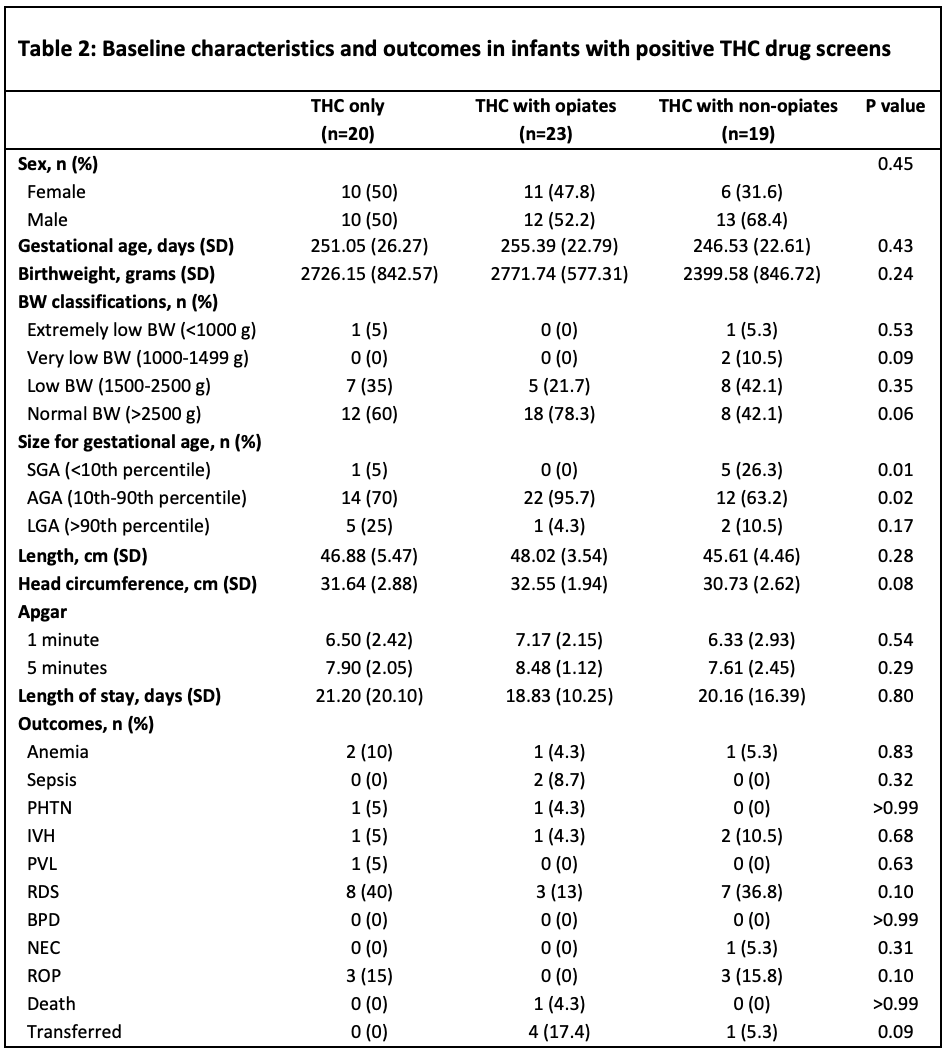Neonatal General
Neonatal General 9: NOWS and Other Exposures
204 - A retrospective cohort study on the effects of maternal cannabis use on neonatal outcomes
Publication Number: 204.333

Jennifer Sanchez, MD (she/her/hers)
Resident Physician
University of California, Irvine, School of Medicine
Orange, California, United States
Presenting Author(s)
Background:
Maternal cannabis use in the United States has doubled over the past decade and continues to increase after widespread legalization of medical and recreational marijuana. Prior studies suggest an association between in-utero cannabis exposure and preterm delivery, low birth weight, and small for gestational age. With greater prevalence in maternal cannabis use and higher likelihood of concomitant tobacco and polysubstance abuse, continual analysis of its effects on neonatal outcomes is warranted.
Objective:
To examine the effects of maternal cannabis use on neonatal outcomes with consideration of concurrent polysubstance use.
Design/Methods:
A retrospective cohort study was performed on infants admitted to the neonatal intensive care unit at University of California, Irvine Medical Center from January 2014 to May 2022. Infants born to substance abusing mothers with positive tetrahydrocannabinol (THC) on meconium or urine drug screens were further categorized into 3 groups (THC only, THC with opiates, and THC with non-opiates). Primary outcome was length of stay and secondary outcomes were gestational age and size, birth weight, length, and head circumference. The Kruskal-Wallis test was used to analyze numerical variables and chi-squared and Fisher’s exact tests were used to analyze categorical variables.
Results:
From the 62 infants with positive THC drug screens, 20 (32.3%) infants tested positive for THC only, whereas the remaining 42 (67.7%) infants additionally tested positive for opiates and non-opiates (table 1). No statistically significant differences between the 3 groups were observed in length of stay, gestational age, birthweight, length, head circumference, Apgar scores, or neonatal outcomes (table 2). Infants positive for THC with non-opiates had the highest incidence of small for gestational age and lowest incidence of appropriate for gestational age.
Conclusion(s): We did not observe statistically significant differences in length of stay and neonatal anthropometrics between the various groups within infants with positive THC drug screens. Our study found an association between infants positive for THC with non-opiates and small for gestational age. Larger sample sizes and adjustment for confounders such as maternal alcohol and tobacco use should be considered for future studies..png)

